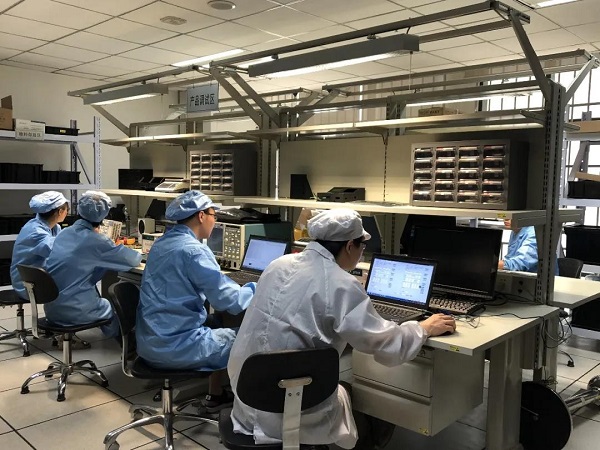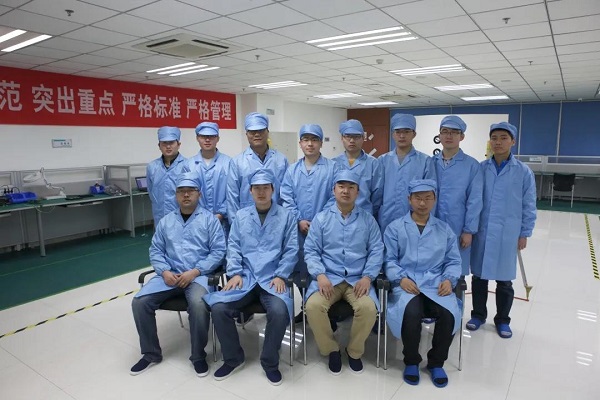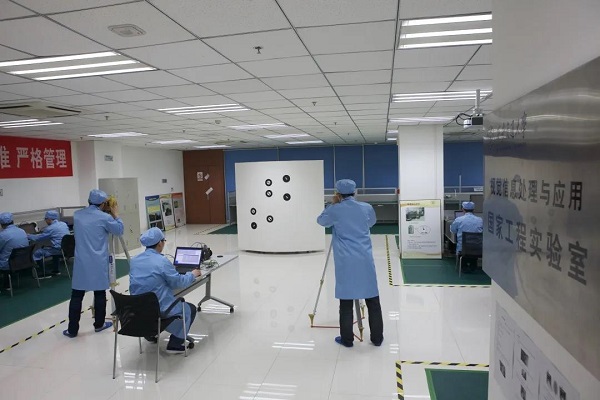Xi'an Jiaotong University research team contributes to the core module mission of Tianhe space station
After the countdown had ticked down to zero at 11:23 am on April 29 at the Wenchang Space Launch Center in Hainan province, a Long March 5B rocket carried the core module of Tianhe (harmony of heavens) space station into orbit, marking that China’s space station construction has entered the full implementation stage.
XJTU innovates vision system for space station’s robot arms
Exploring the vastness of the universe and developing the space industry to build a nation with strong power in space is a dream relentlessly pursued by Chinese people.
The China’s Tianhe Space Station consists of five modules: the core module, Wentian space lab and Mengtian space lab, the manned spacecraft (Shenzhou) and the cargo spacecraft (Tianzhou-1). Each module is not only an independent vehicle but can also be combined with the core module to work under unified scheduling to complete various tasks of the space station.
The robot arms are important for the space station, and the vision system equals their “eyes”. XJTU’s research team at the College of Artificial Intelligence (the Institute of Artificial Intelligence and Robotics) has equipped the robot arms with bright “eyes”, so that they can successfully complete tasks such as cabin transfer, hovering vehicle capture, auxiliary docking, cargo handling and assisting astronauts to exit the capsule.
Since 2007, Zheng Nanning, CAE member and professor of Xi'an Jiaotong University, has been leading a team of researchers in the development of a vision system for the space station’s robot arms. As the project leader, Professor Wang Fei of Xi'an Jiaotong University and his team have together engaged in the design of that vision system, including its software and hardware development.

After more than ten years of hard work, Wang’s team successfully figured out the principle of the electrical properties and developed prototype products. Although Wang didn’t watch the launch of the core module of the Tianhe Station on the spot due to work, he saw the exciting moment through a live broadcast.
“Ten years to sharpen a sword!” Wang shared this sentence on his WeChat moment. Wang’s team started from “zero” and went through numerous tests and challenges, but as long as they remembered that this is a major national research task, they remained full of motivation.
The national mission is the responsibility of XJTUers
“XJTUers always go where the motherland needs them most.” This phrase not only refers to the westward relocation of XJTU, but also shows the determination and perseverance of XJTUers who are always ready to rush to advance the country’s development in any location. Wang’s team is a vivid reflection of this motto.

Wang’s team, from the time they first took up this research project more than ten years ago, have been fully committed to serving the needs of national major engineering vision system applications through scientific and technological innovation.
Time after time, and one experiment after another, Wang’s team has fulfilled its promise. In June 2016, the vision system for Aolong-1 space debris cleaner was successfully developed. In November 2020, the vision system for Chang’e 5 was successfully developed.
Wang’s team is a true reflection of “commitment, collaboration and mutual growth”.
Under the influence of Wang, the team members have formed a good atmosphere of mutual help, and built a team with comprehensive advantages. Meanwhile, many team members, including Zhang Xuetao, Guo Yu, Zhang Qiuguang, Lin Mengyuan and Wang Yiwei have grown up rapidly in the field of space vision engineering, accumulating rich practical engineering experience and training a number of outstanding young talents in this field who are urgently needed by the country.
“Exhilarating! Exciting!” said team member Dr. Yang Haiwei. After so many years of working on the mission, this was the first time that he had been at the launch site as an observer. Hearing the crowd as it waved the national flag, singing and cheering, Yang stretched his brow and smiled shyly.

“I am excited and proud, but more than that, I am determined to work harder. I still remember the overnight stays and repeated experiments. Our team completed the task and didn’t fail to live up to this heavy responsibility,” said Yang.
Wang’s team is characterized by two valuable spirits. One is the spirit of “patriotism and struggle”, in which the team has worked silently to test and analyze millions of images at all stages of development and under all types of operating conditions.
The other one is called the spirit of manned spaceflight, which is characterized by “special ability to bear hardship, special ability to fight, special ability to tackle problems and special ability to dedicate”. They have tackled each problem to lay a solid foundation for the successful mission.
Today, China has entered a new chapter in aerospace development. XJTUer’s commitment to strengthening the country with science and technology and serving it with innovation is still leading them forward with strength and firmness.

